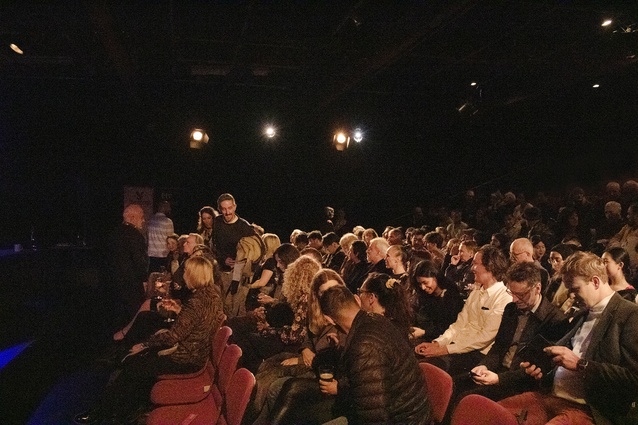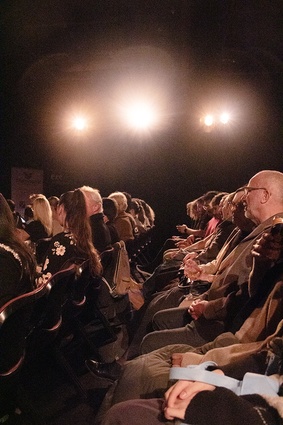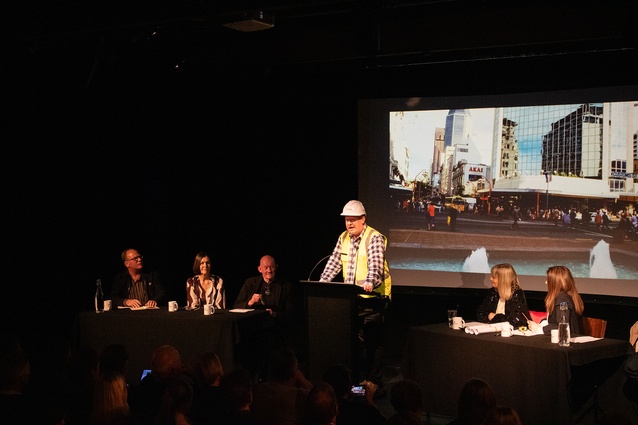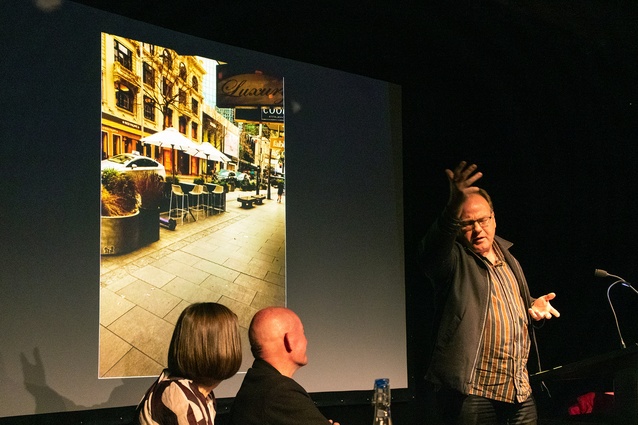Queen Street: To evolve or devolve?
Annabelle Smith was in the audience as six high-profile urban specialists debated the future of Tāmaki Makaurau’s main street. How will Queen Street accommodate an anticipated 18% population growth over the next decade? How can we cultivate a return of people to the city centre? How will Auckland’s golden mile reflect our diverse community? Is a radical return to nature the answer?
These were the predominant themes that arose from ‘The Great Debate’ under the motion ‘Queen Street Must Evolve!’, held on September 27 at Auckland’s Q Theatre as part of 2024’s Aotearoa Festival of Architecture.
The six speakers, forming a broad cross-section of industry expertise, were randomly assigned sides — the affirmative presenting a strong case for urban development, while the opposition presented arguments in support of Queen Street’s urban ‘devolution’. The ensuing (great) debate was moderated by architect Kent Nixon and convened by Te Kāhui Whaihanga New Zealand Institute of Architect’s Jenny Chen, architect and master of ceremonies.

With Auckland’s population forecast to reach two million in the next decade, Viv Beck, Chief Executive of Heart of the City and the first speaker affirmative, opened the debate with compelling statistics on Queen Street’s current tenancy and its anticipated urban growth. As Auckland CBD’s main commercial thoroughfare, Queen Street has diverse occupants, with approximately 150,000 people working in the city centre, alongside 40,000 residents and 70,000 students from the University of Auckland and AUT. Beck challenged the audience to envision what 100,000 families living in less than 1% of Auckland’s area would look like, including the effects on housing, schools, jobs and transport.
Future growth is expected around Queen Street and Karangahape Road, with engineer and professor John Tookey on the affirmative exclaiming that things will be changing, whether we like it or not: “We have 19th-century infrastructure, 20th-century architecture and 21st-century needs, demands and aspirations”. To progress, architectural practitioner and teaching fellow Juliana Wilson emphasised we must focus on improving our existing infrastructure: “As the city intensifies we must fertilise the tall, not the sprawl”.
Discussions between both sides emphasised the need to cultivate the return of people to Queen Street, with a critical focus on access improvements. The City Rail Link, set to be completed by late 2025, will double train services to and from the city, significantly upgrading connectivity.
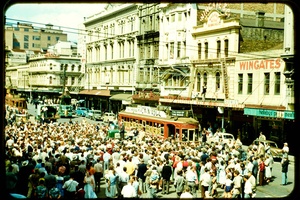
Above ground, the affirmative advocated for prioritising pedestrians to support micro-mobility and accessibility, arguing reduction of vehicle traffic would alleviate unsafe navigation and pollution. Engineer Karen Pettigrew of the opposition highlighted the lack of success in current traffic reduction and pedestrianisation efforts. She suggested a return to proven methods, citing 63 million tram rides taken on Queen Street in 1926 despite a population of only 90,000, implying that reinstating trams could play a part in meeting future transportation and accessibility demands.
The opposition underscored the need for Queen Street to embody Aotearoa’s cultural identity, as the street has not kept up with Auckland’s growing diverse community. Founded in 1840 and named after the then-reigning monarch, Queen Street reflects colonial influence, highlighting tensions between local development and loyalty to the Crown.
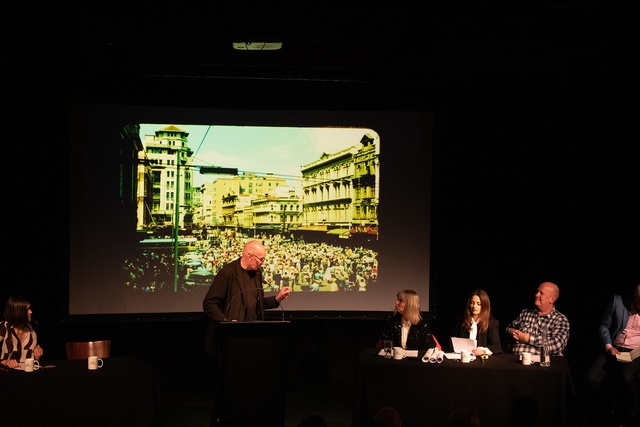
Daylighting the Waihorotiu stream would be a significant intervention to honour our Māori identity. An argument made by opposition Bill McKay, UoA lecturer and RNZ urban issues commentator: “Queen Street must devolve… back to nature, unleash the taniwha, let the Waihorotiu chuckle”. Te wai Horotiu means ‘the water of Horotiu’; the name of a taniwha who resides within, protecting and representing the awa’s ancestral significance to Ngāti Whātua Ōrākei. The iwi traditionally lived in papakāinga along the banks, relying on the awa for fresh water, agriculture, fishing and native plants.
The opposition also proposed transforming Auckland’s heart into its lungs by reintroducing native forestry. By way of support, architect Julian Mitchell lightheartedly noted that navigating Queen Street already requires ‘bush bashing’ through “millions of potted plants and gutters overflowing with water”, implying we might as well take it one step further by reforesting and daylighting Waihorotiu stream. McKay cited the daylighting of Cheonggyecheon stream in South Korea, which generated many community and environmental benefits. The affirmative responded, acknowledging the importance of nature, yet contended it is possible to enhance Queen Street’s air quality and atmosphere without compromising its functionality as a major thoroughfare and destination.


So, who had the more convincing argument? It became clear both opposition and affirmative agreed on one fundamental point: change is essential.
They converged on several themes: improving accessibility through pedestrianisation and transportation, reintegrating nature, and creating vibrant community spaces that cater to our multicultural community’s needs for living, working, relaxing and socialising — all whilst maintaining modern amenities and connection to wider Auckland.
The debate successfully engaged and educated the public, igniting further discussion and underscoring the importance of ongoing conversation until we get it right. Moving forward, it’s imperative we work in collaboration with Ngāti Whātua Ōrākei and mana whenua as we progress toward an urban environment that is authentically reflective of our diverse cultural identity.
By way of acclamation, the opposition came out on top by a whisker, and the event concluded with both teams in agreement that Queen Street must evolve functionally, environmentally and culturally to sustain Auckland’s growing multicultural community and sustainable future in the 21st century and beyond.
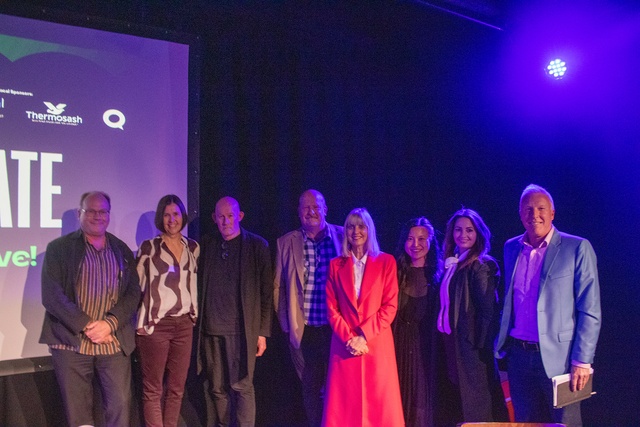
The Great Debate was made possible through the support of the Auckland Branch of Te Kāhui Whaihanga New Zealand Institute of Architects.



